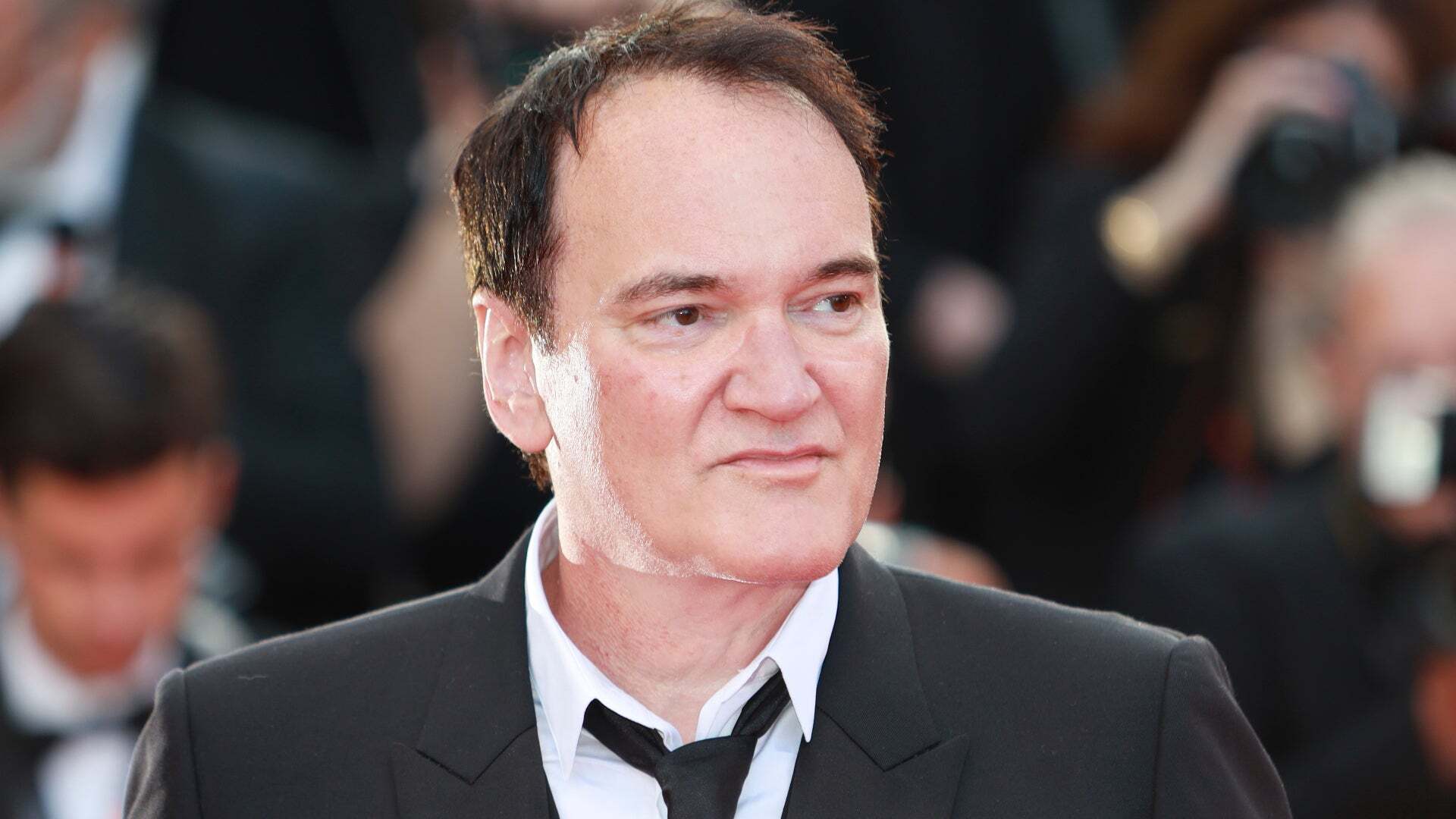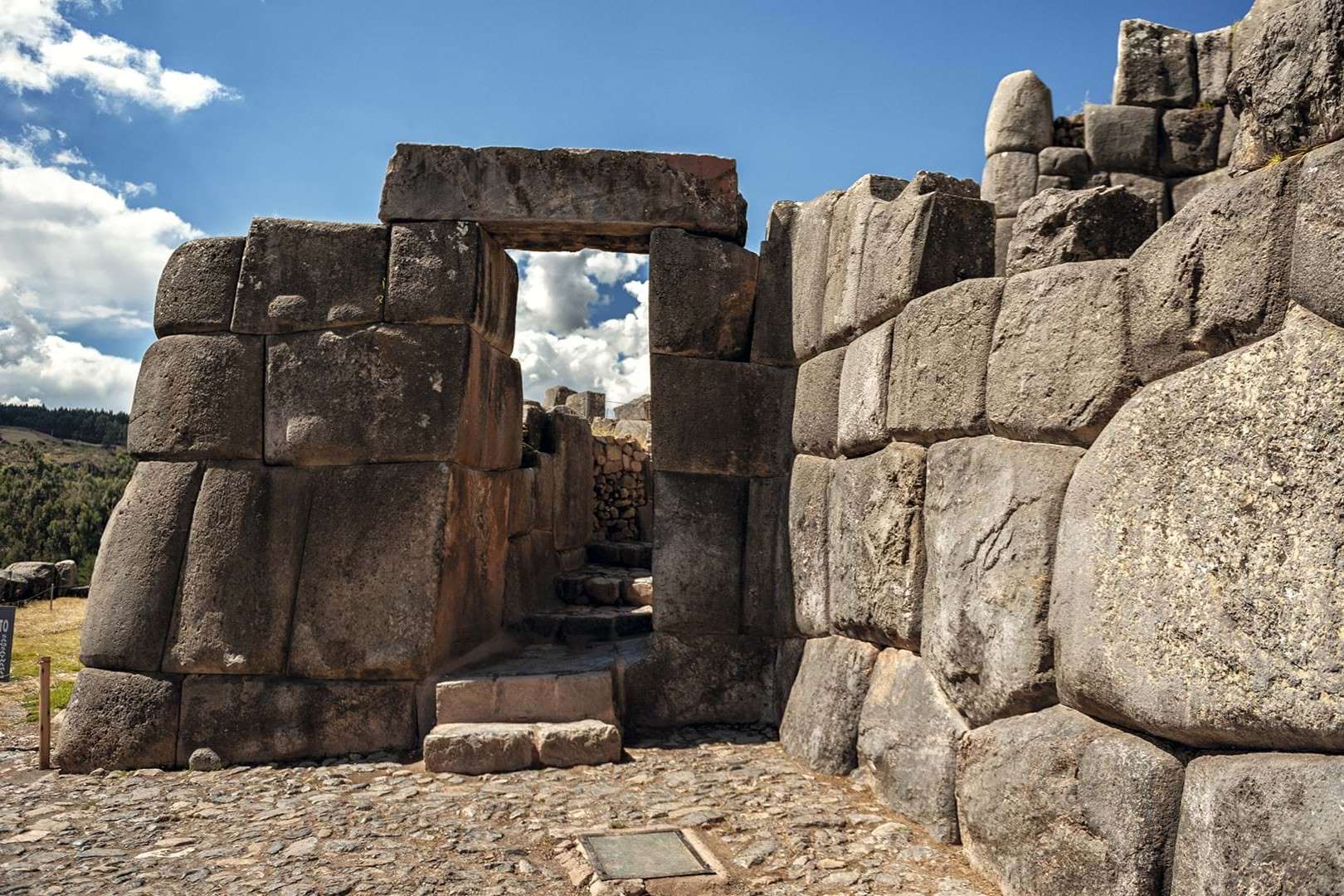
Quentin Tarantino, a name synonymous with groundbreaking cinema, has carved a niche for himself with his unique storytelling, sharp dialogue, and distinct visual style. Born in Knoxville, Tennessee, in 1963, he dropped out of school at 16 to chase his passion for acting and filmmaking. From working at a video rental store to directing cult classics like "Pulp Fiction" and "Kill Bill," Tarantino's journey is as riveting as his films. Known for his non-linear narratives, graphic violence, and memorable characters, he has left an indelible mark on contemporary cinema. What makes Quentin Tarantino one of the most influential directors of our time? Let's dive into 50 fascinating facts about his life and career.
Quentin Tarantino: The Man Behind the Camera
Quentin Tarantino is a name that resonates with film enthusiasts worldwide. Known for his unique storytelling, captivating dialogue, and distinct visual style, he has left an indelible mark on the film industry. Here are 50 fascinating facts about this iconic filmmaker.
-
Middle Name
Tarantino's middle name is Jerome, adding a personal touch to his already distinctive name. -
Ancestry
He has Italian, Irish, and Cherokee ancestry, reflecting the diverse cultural influences that shape his work. -
Early Life
Born in Knoxville, Tennessee, in 1963, Tarantino dropped out of school at 16 to pursue acting at James Best Theatre Company. However, he became bored after two years and dropped out again.
Early Career and Influences
Tarantino's journey to becoming a legendary filmmaker started in humble beginnings. His early career and influences played a significant role in shaping his unique style.
-
Video Rental Store
Tarantino worked at a video rental store called Video Archives. Observing what people liked to watch influenced his directorial choices, as he would often discuss films with customers and analyze their preferences. -
First Film
In 1987, Tarantino co-wrote and directed his first film, "My Best Friend's Birthday." Although the film reels were almost fully destroyed in a fire, the screenplay went on to provide the basis for "True Romance" (1993). -
Pulp Fiction Clocks
All the clocks in the pawn shop in "Pulp Fiction" are set to 4:20, a detail that has become iconic in Tarantino's films.
Unique Storytelling Techniques
Tarantino is known for his unconventional storytelling techniques. His ability to weave complex narratives and create memorable characters sets him apart from other filmmakers.
-
Script Types
Tarantino writes two types of scripts: "Movie Movie" and "Realer than Real World." He suggests that those who reside within the "Realer than Real World" universe would want to watch those in the "Movie Movie" universe, which he describes as unrealistic. -
Inglourious Basterds Bat
One of the names carved into the bat carried by The Bear Jew in "Inglourious Basterds" is Anne Frank, adding a poignant and historical element to the film. -
Madonna's Message
After watching "Reservoir Dogs," Madonna, who was the subject of the opening dialogue, sent Tarantino a copy of her "Erotica" album with the message "To Quentin. It’s not about dick, it’s about love. Madonna." -
Leaving 20% Unseen
Tarantino likes to leave 20% of the movie unseen, as seen in "Pulp Fiction," where the contents of the suitcase are not shown. This technique makes the movie more personal for the viewer.
Personal Preferences and Quirks
Tarantino's personal preferences and quirks often find their way into his films, adding a unique flavor to his storytelling.
-
Elvis Impersonator
Tarantino played an Elvis impersonator in the comedy show "The Golden Girls," showcasing his versatility beyond filmmaking. -
Dislike for Sports
Tarantino doesn’t like sports and has said, “I don’t hang around pool halls. I don’t play poker. And I don’t go to sporting events. To me, torture would be watching sports on television.” However, he enjoys the atmosphere at Dodger Stadium, where the game is secondary to the beer and environment. -
Writing Process
Tarantino wrote "Inglourious Basterds" between writing "Jackie Brown" and the "Kill Bill" films, demonstrating his ability to juggle multiple projects simultaneously.
Themes and Inspirations
Tarantino's films often explore themes of revenge, racism, and historical fiction. His inspirations come from a wide range of sources, including literature, history, and other films.
-
Revenge Trilogy
"Inglourious Basterds" and "Django Unchained" are the first two parts of a movie trilogy based on revenge, with the third movie rumored to be called "Black Crow." The basis of the plot of "Black Crow" will reportedly be taken from a plotline removed from "Inglourious Basterds." -
Anti-Racism
Tarantino’s revenge and 'blaxploitation' films are based on his genuine hatred of racism, slavery, and the anti-black sentimentality of the American South. He has a fascination with pro-Klan texts like "The Birth of a Nation" and "The Clansman," which he describes as "evil," with only Hitler’s "Mein Kampf" coming close to the level of "ugly imagery." -
Calvin Candie
Tarantino has stated that he hated Calvin Candie, the central villain in "Django Unchained," played by Leonardo DiCaprio. This is the only character he has written that he has genuinely hated, reflecting his strong anti-racist stance.
Visual Style and Techniques
Tarantino's films are known for their distinct visual style, which often includes graphic violence, unique aesthetics, and meticulous attention to detail.
-
Fake Blood Usage
Over 450 gallons of fake blood were used in the two "Kill Bill" films, adding to their graphic and stylized violence. -
Dirty Aesthetic
The actual film of "Death Proof" was physically scratched to achieve a 'dirty' aesthetic, reflecting Tarantino’s attention to detail in creating a unique visual style. -
Reservoir Dogs and Pulp Fiction Connection
In the "Tarantino-verse," Vic (Michael Madsen) from "Reservoir Dogs" and Vincent (John Travolta) from "Pulp Fiction" are brothers, both with the surname Vega. Tarantino toyed with the idea of a cross-cinematic sequel or prequel entitled 'Double V Vega' that would take place in Amsterdam.
Controversies and Criticisms
Tarantino's work has not been without controversy. His films often spark debates and discussions, particularly regarding their language and content.
-
Jackie Brown Stir
The language used in "Jackie Brown" caused quite the stir, with Tarantino facing criticism for its complexity and realism. -
Death Proof Critique
Tarantino has said that "Death Proof" is the worst movie he has ever done, not because it is bad, but because he wants to retire on a high note with his best work. -
Sin City Contribution
Tarantino directed a scene for "Sin City" for a symbolic fee of $1, returning the favor when Robert Rodriguez agreed to score the soundtrack for "Kill Bill" for the same fee.
Inspirations and Homages
Tarantino often pays homage to other films and directors, drawing inspiration from a wide range of sources to create his unique cinematic style.
-
Inglourious Basterds Inspiration
Although not a remake, Tarantino took inspiration for the title of "Inglourious Basterds" from a 1978 Italian war film by Enzo G. Castellari, "Inglorious Bastards." He was asked why he misspelled his film title: “Here’s the thing. I’m never going to explain that. You do an artistic flourish like that, and to explain it would just take the piss out of it and invalidate the whole stroke in the first place.” -
Non-Linear Narratives
Tarantino is known for his non-linear narratives, which have become a hallmark of his storytelling style. This technique keeps audiences engaged and adds complexity to his films. -
Violent Films
Tarantino’s films often feature intense and graphic violence, which has become a signature element of his work. This violence is often played for laughs as much as for shocks, adding to the film's impact.
Cameos and Collaborations
Tarantino often makes cameo appearances in his films and collaborates with a variety of actors and directors, enriching his films with diverse talents.
-
Cameo Appearances
Tarantino often makes cameo appearances in his films, allowing fans to spot him in various roles throughout his movies. This adds a personal touch to his films and has become a tradition in his works. -
Upcoming Projects
As of now, Tarantino has not announced any specific upcoming projects, but fans eagerly await his future endeavors. Speculation includes "Kill Bill Vol. 3," an "Inglourious Basterds" sequel, or even a Bond movie. -
Influence on Film Industry
Tarantino’s unique storytelling techniques and bold approach have had a significant influence on the film industry. His unconventional narratives, memorable characters, and unapologetic approach to storytelling have inspired a new generation of filmmakers and have forever shaped the landscape of contemporary cinema.
Career Highlights
Tarantino's career is marked by numerous highlights, including critically acclaimed films and prestigious awards.
-
Collaborations
Tarantino has collaborated with various directors and actors throughout his career, including frequent collaborations with actors like Samuel L. Jackson and directors like Robert Rodriguez. These collaborations have enriched his films and added to their complexity. -
Impact on Cinema
Tarantino’s impact on cinema is undeniable. His films have left an indelible mark on the industry, influencing storytelling techniques, dialogues, and genre blending. He has become a true icon of modern cinema, inspiring countless filmmakers and redefining the way stories are told. -
Breakthrough Film
Tarantino’s breakthrough film was "Reservoir Dogs," released in 1992. This film marked the beginning of his career and introduced his unique style to the world. -
Pulp Fiction Legacy
"Pulp Fiction" (1994) cemented Tarantino’s status as a master filmmaker. The film won the Palme d'Or at Cannes and earned Tarantino his first Academy Award for Best Original Screenplay. -
Kill Bill Collection
The "Kill Bill Collection" (2005) showcased Tarantino’s ability to blend different genres, including Chinese martial arts, Japanese drama, spaghetti westerns, and Italian horror. The films confirmed him as one of Hollywood’s elite directors. -
Inglourious Basterds
"Inglourious Basterds" (2009) was a critical and commercial success, further solidifying Tarantino’s reputation as a master of historical fiction and action films. -
Django Unchained
"Django Unchained" (2012) won Tarantino his second Academy Award for Best Original Screenplay. The film was praised for its bold and unapologetic portrayal of slavery and racism. -
Once Upon a Time in Hollywood
"Once Upon a Time in Hollywood" (2019) was Tarantino’s most recent film before his speculated retirement. The film received widespread critical acclaim and showcased Tarantino’s ability to blend historical fiction with contemporary themes.
Filmography and Future Plans
Tarantino's filmography is a testament to his talent and dedication to the craft of filmmaking. With only one film left in his ten-film plan, fans eagerly anticipate his next move.
-
Filmography
Tarantino has directed nine feature films, with only one left to go before he vacates the director’s chair for good. His filmography includes "Reservoir Dogs," "Pulp Fiction," "Jackie Brown," "The Kill Bill Collection," "Inglourious Basterds," "Django Unchained," and "Once Upon a Time in Hollywood." -
Ten Film Plan
Tarantino maintains that he is on a ten-film plan, which he has been adhering to throughout his career. This plan has been a guiding principle for his filmmaking journey, ensuring that each film is meticulously crafted and of the highest quality.
Personal Style and Legacy
Tarantino's personal style and legacy have made him a cult director around the world. His films are known for their unique visual style, memorable characters, and bold storytelling.
-
Cinematic Magpie Work
Tarantino’s films are often described as "cinematic magpie work," reflecting his ability to steal from the best. He has cited influences such as Howard Hawks, François Truffaut, and Sergio Leone, blending their styles to create something uniquely his own. -
Perma-Smirk Features
Tarantino is known for his perma-smirk features and breathless jabber mouth conversational style, which exudes an air of limitless enthusiasm and glee. This persona has become synonymous with his filmmaking style and public image. -
Sundance Institute
Tarantino’s script for "Reservoir Dogs" was lambasted when he first workshopped it at the Sundance Institute in 1991. However, he persevered and returned the following year with the finished product, marking a significant moment in his career. -
Cult Director
Tarantino has become a cult director around the world, achieving superstar status while maintaining a unique and distinctive style. His films have become cultural touchstones, influencing countless filmmakers and redefining the landscape of contemporary cinema.
Education and Humble Beginnings
Tarantino's education in filmmaking came from watching and analyzing films. His journey from a video rental store clerk to one of the best-known directors in film today is a testament to his dedication and passion for cinema.
-
Education in Filmmaking
Tarantino’s education in filmmaking came from watching and analyzing films. He would spend all day at the video rental store watching and discussing films with customers, which proved to be an invaluable education in directing. -
Humble Beginnings
Tarantino started out as a humble video-store clerk only to wind up as one of the best-known directors in film today. His journey from a video rental store to the pinnacle of filmmaking is a testament to his dedication and passion for cinema.
Narrative Techniques and Music
Tarantino's films often feature fractured narratives and astute use of music, adding complexity and depth to his storytelling.
-
Fractured Narratives
Tarantino’s films often feature fractured, chronologically reshuffled narratives, which add complexity and depth to his storytelling. This technique keeps audiences engaged and challenges their perceptions of time and space. -
Incidental Dialogue Scenes
Tarantino often pushes incidental dialogue scenes to the center stage, making them integral to the narrative. This technique allows for extended conversations that reveal character traits and backstory, enriching the film’s overall impact. -
Astute Use of Music
Tarantino is known for his astute and bold use of music in his films. He often incorporates iconic songs and scores that enhance the mood and atmosphere of each scene, adding another layer of depth to his storytelling.
Visual Style and Legacy
Tarantino's unique visual style and legacy have made him a true icon of modern cinema. His films are distinguished by their distinct visual language and memorable characters.
-
Unique Visual Style
Tarantino’s films are distinguished by their unique visual style, which blends elements of different genres and eras. From the stylized violence of "Kill Bill" to the nostalgic charm of "Once Upon a Time in Hollywood," each film showcases his ability to create a distinct visual language. -
Legacy in Film Industry
Tarantino’s legacy in the film industry is far from over. His influence extends beyond the screen, inspiring a new wave of filmmakers and redefining the way stories are told. His dedication to his craft and meticulous attention to detail have earned him numerous accolades, including Academy Awards for Best Original Screenplay. -
Final Film Speculation
Speculation over Tarantino’s final film is rampant, with possibilities including "Kill Bill Vol. 3," an "Inglourious Basterds" sequel, or even a Bond movie. Regardless of what comes next, it is clear that Tarantino will leave an indelible mark on the world of cinema, cementing his status as one of the greatest filmmakers of all time.
Tarantino's Lasting Impact
Quentin Tarantino's influence on modern cinema is undeniable. With his unique storytelling, captivating dialogue, and distinct visual style, he's carved out a niche that's both revered and imitated. From his early days at a video rental store to becoming a cult director, Tarantino's journey is a testament to passion and dedication. His films, like "Pulp Fiction" and "Kill Bill," are now cultural touchstones, blending genres and pushing boundaries. As he approaches his tenth and final film, speculation is rife, but one thing's certain: Tarantino's legacy will endure. His bold approach and unconventional narratives have inspired countless filmmakers, ensuring his mark on the industry remains indelible. Whether it's the non-linear storytelling or the iconic music choices, Tarantino's work continues to captivate and challenge audiences worldwide. Here's to a cinematic legend whose impact will be felt for generations.
Was this page helpful?
Our commitment to delivering trustworthy and engaging content is at the heart of what we do. Each fact on our site is contributed by real users like you, bringing a wealth of diverse insights and information. To ensure the highest standards of accuracy and reliability, our dedicated editors meticulously review each submission. This process guarantees that the facts we share are not only fascinating but also credible. Trust in our commitment to quality and authenticity as you explore and learn with us.


